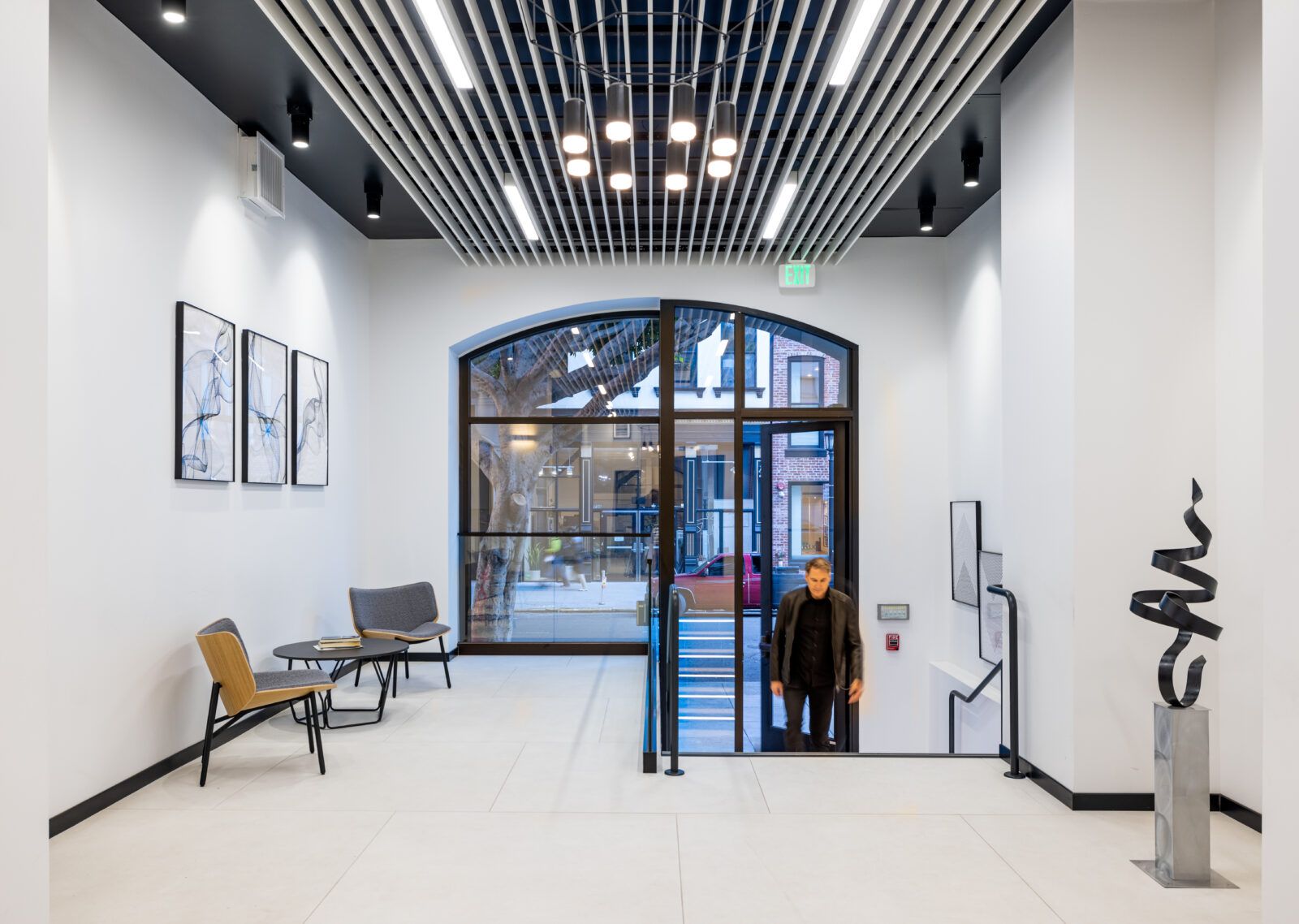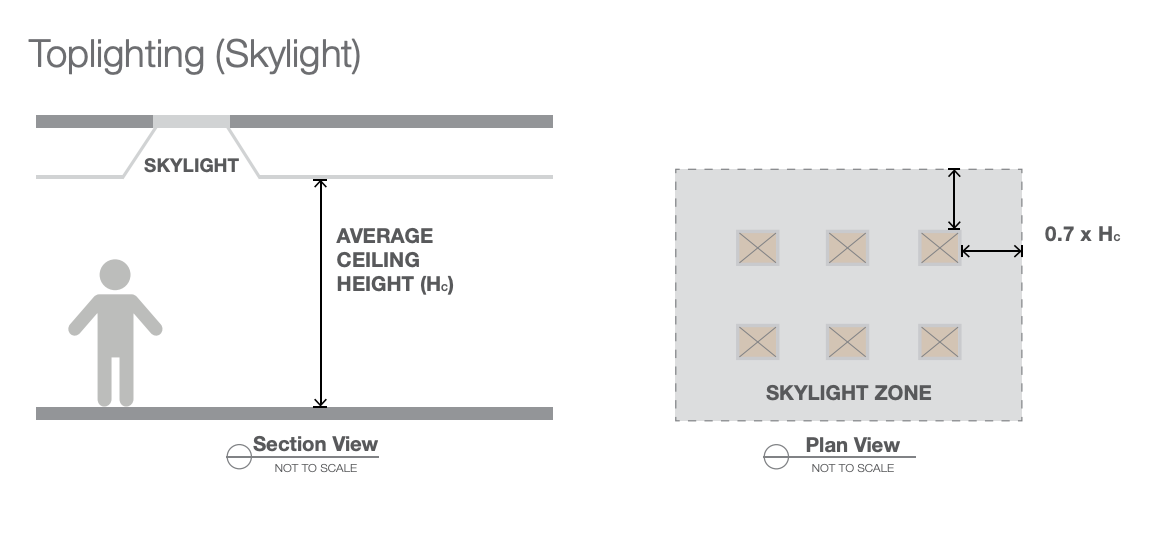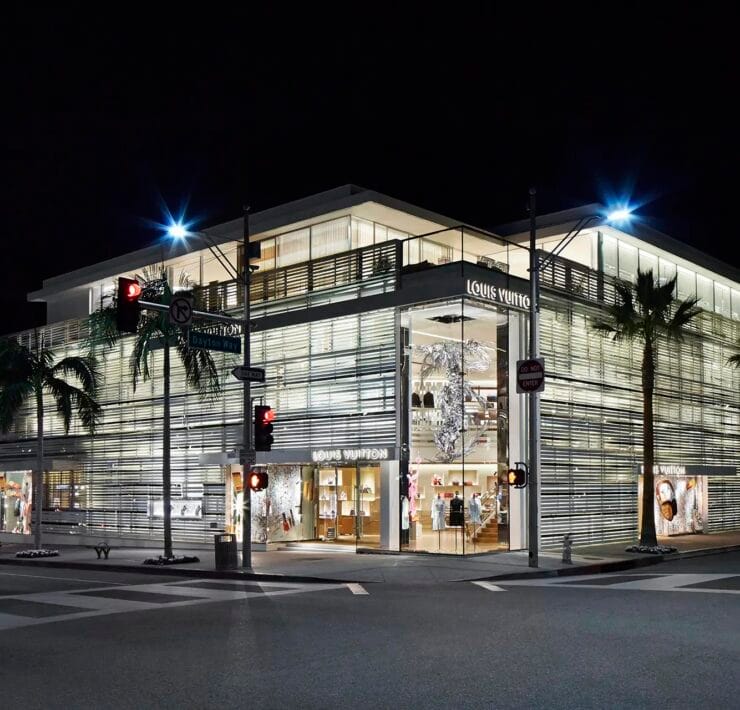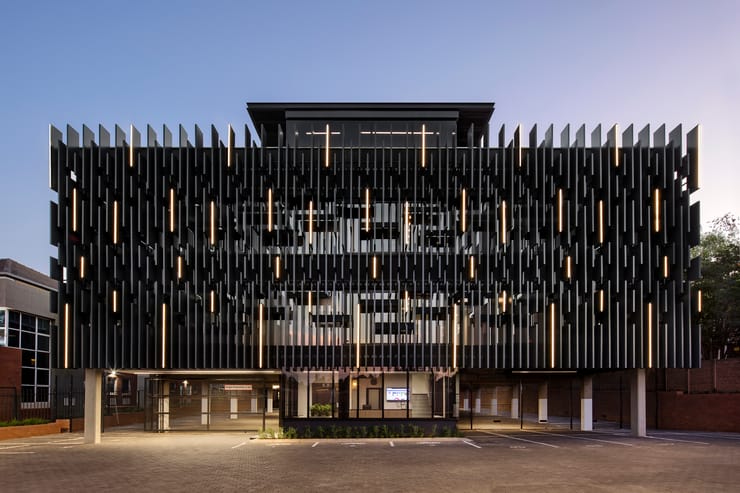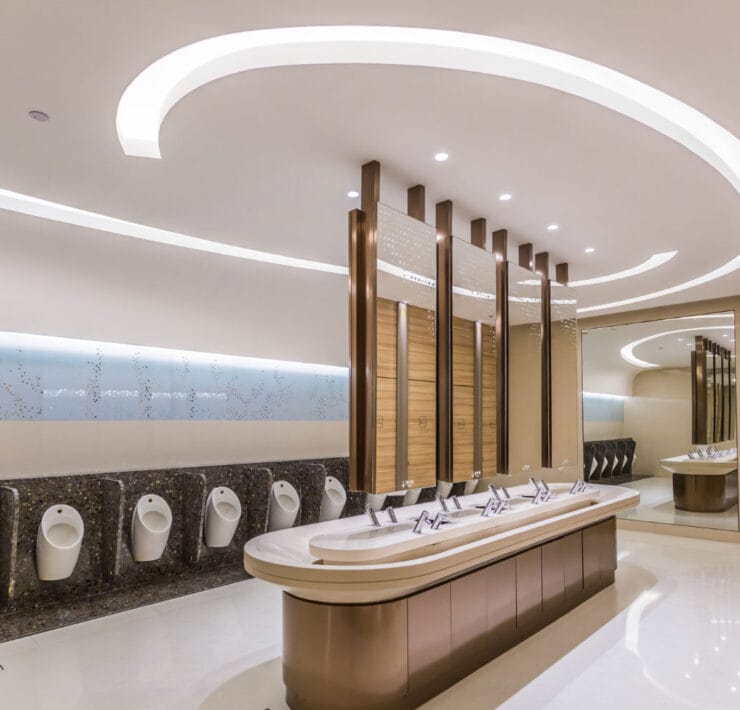As energy efficiency standards continue to evolve, 2024 brings significant updates to commercial lighting energy regulations across the U.S. These changes, guided by organizations such as the Department of Energy (DOE), International Energy Conservation Code (IECC) and ASHRAE, aim to reduce energy consumption, improve sustainability and support America’s goal of energy independence. This article highlights the key updates shaping non-residential building energy requirements in 2024 and their implications for architects, lighting designers and building professionals
Table of contents
2024 federal energy mandates
While overall building energy standards are not federally regulated, the Department of Energy has continued to implement specific laws that apply to energy regulation. On August 1st of 2023, the DOE required retailers to sell light bulbs that produce at least 45 lumens per Watt, effectively banning incandescent bulbs. Moreover, 25 U.S. governors have committed to eliminating emissions from buildings in their states.[2]
Take a moment to look at your state’s regulations: U.S. Energy Code Regulations by State Tool.
What’s new in 2024 for non-residential building energy requirements?
In September 2023, the U.S. Department of Energy announced:
“…$400 million for states to improve building energy efficiency, save consumers money, and make buildings more climate resilient”
—U.S. Department of Energy
Commercial lighting standards for 2024
Regulatory changes for 2024 will bring the following four terms to the forefront of commercial lighting regulation discussions. These are the most significant energy regulation updates set for 2024 across the country.
The IECC expects major changes for commercial buildings to include:
- Additional efficiency credits
- Introduction of Total System Performance Ratio
- Interior LPA reductions
- Egress lighting off when unoccupied
- Fan energy reductions
- Variable air volume (VAV) turndown requirements
- Parking Garage Ventilation
- 5% increase in renewable energy for the largest three floors
- Revised HVAC efficiency tables
The ASHRAE 90.1 standard also includes the following updates:
- Horticultural lighting requirements
- Clarifications to lighting controls requirements
- Simplified building energy calculation method
- Exterior lighting requirements
- Interior Lighting Power Allowance (LPA) requirements
Above information on energy regulation updates from the NECC U.S. department of energy.[1] The detailed information on IECC lighting updates can be found on the ICC website.
Lighting Power Allowance
The Lighting Power Allowance (LPA) is the maximum allowed watts per square foot. In California’s Title 24, the LPA is being reduced from .65 to .6 watts per square foot in 2023. New changes for allowances also include wall display, task lighting, and decorative lighting (Title 24 Part 6, Table 140.6-D). However, while most LPA requirements have decreased in energy, some have also increased. The 2024 International Energy Conservation Code (IECC) will be available in the second quarter of 2024.
Open Office Occupancy Controls
Occupant sensor controls are typically used in open-plan office spaces, cafeteria dining spaces, and fast-food dining spaces. Under regulations like Title 24, controls must be configured so general lighting can be controlled in “zones,” with floor areas not greater than 600 square feet, and occupant sensors required in offices larger than 250 square feet. General lighting in each controlled zone should turn off after 20 minutes of occupants leaving a particular zone.
Automatic Daylighting Controls
Automatic daylighting controls refer to a photosensor and switch or dimming control unit. The photosensor is mounted to the interior wall, ceiling, or light fixture within the daylighting zone. It sends a signal to the control unit when the preset lighting threshold is reached to reduce electrical light levels in a particular zone.
Daylighting zones include:
- primary side-lighting
- secondary side-lighting
- top-lighting
Primary and secondary side-lighting zones are illuminated by windows, while top-lighting zones are illuminated by skylights.
Automatic Receptacle Control
Automatic Receptacle Control, also known as plug-load control, is required to reduce building energy use. The government control limits energy consumption at electrical receptacles during non-occupied times, which reduces what the government deems “unnecessary energy usage and cost and supports sustainability.” In addition, some states require these receptacles as part of code requirements.
Receptacle controlling methods include:
- Schedule-based or timer-based receptacles that can switch off at programmed times
- Occupancy-based sensor which must turn off electrical outlets within 20 minutes of all occupants leaving a space
- System-based signal from another control or alarm system which must turn off electrical outlets within 20 minutes after determining that the area is unoccupied.
Demand Responsive Lighting Controls
Demand Responsive Lighting Controls utilize control mechanisms to dim lighting levels during periods of high grid-wide demand, primarily to aid utilities in maintaining grid stability. According to the Demand Responsive Lighting Control Declaration of California’s Title 24, (Part 6, Section 110.12(a)1B)
“…requires that all demand responsive lighting controls be certified by the manufacturer as being capable of responding to signals from an OpenADR 2.0b Virtual End Node [utilities or state-controlled software].”
—California Title 24 Demand Responsive Lighting Declaration, Part 6, Section 110.12(a)1B
Demand-responsive lighting controls are now required for any building with an installed general lighting load of 4000 Watts or more. Also, photovoltaics and battery storage are required for most commercial buildings.[2] Title 24 Part 6 also updated its outdoor lighting control requirements and now includes a new section for indoor lighting control interactions.
Another important update to Title 24 Part 6 is the category of multi-family buildings, which previously included requirements from both residential and non-residential code, which has now been simplified for clarity. The California Energy Commission projects these updates to reduce CO2 emissions by 10,000 metric tons compared to the previous code.[3]
Energy credit measures for lighting
“Tax credits and tax deductions both decrease the total that you’ll pay in taxes, but they do so in different ways. A tax credit is a dollar-for-dollar reduction of the money you owe, while a tax deduction will decrease your taxable income, leading to a slightly lower tax bill.”[4]
IECC 2024 is adding additional efficiency credits to align with the new credit option included in ASHRAE 90.1 in 2022. Credits are likely to be available for the following:
- Dimming and tuning
- More occupancy sensors
- Increase in daylight areas
- Light power reduction
Federal tax deductions are also available for new construction and retrofit buildings through incentives such as IRS 179D (for commercial and high-rise buildings) and 45L (for multifamily developers). The 179D tax deduction and its recent changes allow owners, designers, and builders to benefit from significant tax deductions to their energy efficient commercial buildings. Review our guide to the 179D tax incentives for a better understanding of how these deductions work.
More updates to energy regulations are to come to achieve and exceed the goal of becoming energy-efficient and carbon-neutral.
Sources:
ICC. California Energy Code.
[1] NECC. What’s the Latest in the IECC and 90.1 Model Code Development Cycles?
[2] LEDs Magazine. What’s new for lighting controls in the upcoming Title 24.
[3] Regency Supply. What’s new with Title 24, Part 6 changes in 2023?
[4] Smart Asset. Differences of Tax Credits vs. Tax Deductions.
Inside Lighting. Unpacking Energy Codes for Lighting Controls Applications.
Garrett Rock is a lighting designer based in San Francisco, California. He graduated from the University of California, Davis with a degree in architecture and received his Masters in interior architecture from the California College of the Arts. He's worked for Architecture & Light, Banks Landl Lighting Design and WSP.

